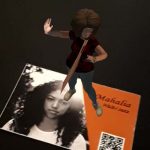FMP project by Matthijs Hoekstra
… Hangzhou Bobo is developing a sensor which can be implemented in, for example, an office chair. This sensor can measure several health-related data and thus can provide an employee with direct feedback and insights … Hangzhou Bobo is currently pre-occupied with creating a relationship with SUNON a Chinese office equipment producing company within China. For this partnership, there is an integrated value proposition for the sensor detailing the design and technology. This proposition is solely focused on the Chinese market and therefore not adapted to any countries outside of China. As indicated by others, companies operating in different market networks (e.g. Europe and China) need to adjust their strategies to be successful, as the context can differ both on a cultural level. Thus, it is necessary to change the current proposition into an adapted one for the European market; this, therefore, includes exploring the business landscape in Europe and defining new (design) directions for using the data in office environments in the EU.
FULLTEXT: PDF








 This report details the combined work of Bram de Vogel (B3.2 Final Bachelor) and Myrte Thoolen (Pre-Master) in semester 1 2015-2016. We developed the “Eve” Sleep Diary concept within the context of the project Tools for Medical Professionals and the project track Sleep in particular. The design challenge in the project was to develop a new sleep diary for use in the treatment of patients with insomnia. For our final concept, we designed “Eve,” a hybrid physical-digital sleep diary. Eve aims to improve the sleep logging experience for insomnia patients and to provide medical specialists with more quality and
This report details the combined work of Bram de Vogel (B3.2 Final Bachelor) and Myrte Thoolen (Pre-Master) in semester 1 2015-2016. We developed the “Eve” Sleep Diary concept within the context of the project Tools for Medical Professionals and the project track Sleep in particular. The design challenge in the project was to develop a new sleep diary for use in the treatment of patients with insomnia. For our final concept, we designed “Eve,” a hybrid physical-digital sleep diary. Eve aims to improve the sleep logging experience for insomnia patients and to provide medical specialists with more quality and